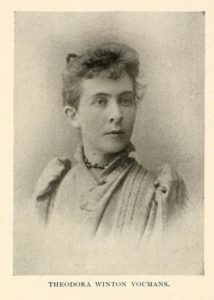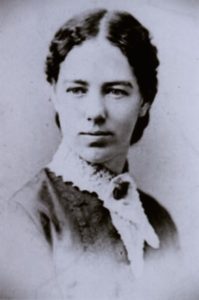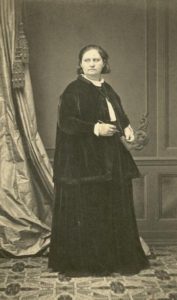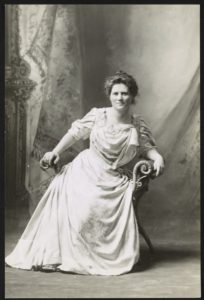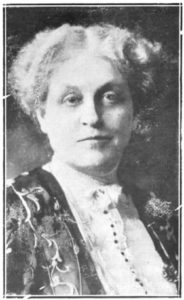Next month, Wisconsin will celebrate the 100th anniversary of becoming the first state to ratify the 19th Amendment, giving women the right to vote. But did you know many of the women who paved the way in that fight were journalists?
Emma Brown
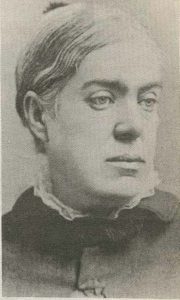
Emma Brown, co-founder of The Wisconsin Chief and the first successful female editor and publisher in Wisconsin, was born on Nov. 6, 1827, in Auburn, N.Y.
Emma and her brother, Thurlow W. Brown, first published the newspaper in Auburn under the name The Cayuga Chief. In 1856, they moved to Fort Atkinson, Wis., changing its name to The Wisconsin Chief.
After Thurlow died in 1866, Emma continued to publish Fort Atkinson’s first newspaper on her own. She even printed the Jefferson County Union until W.D. Hoard was able to raise the funds needed to buy his own printing plant.
Originally devoted to upholding the ideal of temperance, under Emma’s leadership the Chief began to include more reform pieces, such as articles on prison conditions, factory conditions and women’s suffrage.
Just months before her death in 1889, Emma’s health forced her to suspend publication of the Chief.
Theodora Youmans
Theodora (Winton) Youmans, a leader in the women’s suffrage movement and one of Wisconsin’s first female journalists, was born in 1863 in Dodge County, Wis.
She became a freelance writer in the 1880s and, after graduating from Carroll College, went to work for the Waukesha Daily Freeman where she met her husband, Henry Mott Youmans, editor of the paper.
Theodora began writing the influential “Women’s World” column for the newspaper in 1887, and became associate editor in 1890.
Theodora was the only Wisconsin native to ever rise to leadership in the state suffrage movement, serving as press secretary for the Wisconsin Women’s Suffrage Association in 1912 and being named president in 1913. She also was editor of the association’s magazine, The Woman Citizen.
Clara Bewick Colby
Clara Bewick Colby, a prominent suffragist and journalist, was born in England in 1846, but grew up mostly in Windsor, Wis.
Clara was one of six women in UW-Madison’s first co-educational class, graduating as valedictorian in 1869. She married attorney and military officer Leonard Colby in 1871, and the couple moved to Nebraska the next year.
In 1881, she became vice president of the Nebraska Woman Suffrage Association and, in 1883, she started the monthly newspaper, the Woman’s Tribune. It published for 26 years and became the official paper of the National Woman Suffrage Association.
RELATED:
- The history of Wisconsin’s women’s suffrage movement
- These six Wisconsin women played key roles in the suffrage movement
- The unlikely story of how Wisconsin became the first state to ratify the 19th Amendment
- Beginning the work: Wisconsin women who paved the way in the suffrage fight
- Women’s Suffrage Centennial Celebration: Witness the unveiling of the original 19th Amendment
Mathilde Anneke
Mathilde (Giesler) Anneke, who launched the country’s first feminist newspaper, was born April 3, 1817, in Lerchenhausen, Westphalia, and later settled in Milwaukee after immigrating to the United States.
After her first marriage ended in divorce, Mathilde was forced to support herself and her daughter and gained prominence writing and editing stories and poems. Mathilde’s drama, Oithono oder die Tempelweihe, may be the only successful 19th-century German tragedy written by a woman, according to the Wisconsin Historical Society.
She married Fritz Anneke in 1847, and the couple settled in Cologne, where they founded a daily newspaper for the working class. When her new husband’s political dissent landed him in prison, she single-handedly edited, managed and printed the paper until it was banned. Undeterred, Mathilde founded the first German feminist newspaper, Frauen-Zeitung, in 1848.
The couple was forced to flee the next year to the United States and, shortly after settling in Milwaukee, Mathilde continued to blaze trails for women and journalism. In 1852, she launched the United States’ first feminist newspaper, Deutsche Frauen-Zeitiung, and began a close collaboration with Susan B. Anthony and Elizabeth Cady Stanton.
Facing pushback from male printers who organized against her, Mathilde ended the journal after just a handful of issues but continued to advocate for women’s rights until her death in 1884.
Belle Case La Follette
Belle Case La Follette, a skilled orator and the first woman to earn a law degree from the University of Wisconsin Law School, was born in 1859, in Summit, Wis.
While attending UW-Madison, Belle met her husband Robert “Bob” M. La Follette, Sr. Together, the couple started La Follette’s Magazine, which later became the Progressive, and Belle wrote a column for the magazine called “Home and Education,” in which she advocated for women’s suffrage.
Carrie Chapman Catt
Carrie (Lane) Chapman Catt, a national leader of the women’s suffrage movement, was born in Ripon, Wis., in 1859, and moved to Iowa as a child.
After graduating in 1880 from Iowa State College at the top of her class, Carrie became one of the first women to be appointed superintendent of schools in 1883.
In 1885, she married Leo Chapman, editor and publisher of the Mason City (Iowa) Republican, who died of typhoid fever the following year in San Francisco, Calif., where he had gone in search of a new job. Carrie arrived a few days after her husband’s death and decided to remain in San Fransisco, where she became the city’s first female newspaper reporter.
In 1887, Carrie returned to Iowa and joined the Iowa Woman Suffrage Association for which she worked as a professional writer and lecturer.
Want to learn more about the women’s suffrage movement in Wisconsin?
There are a number of exhibits and events planned across the state, including one inside the Wisconsin State Capitol rotunda that will be displayed until November.

